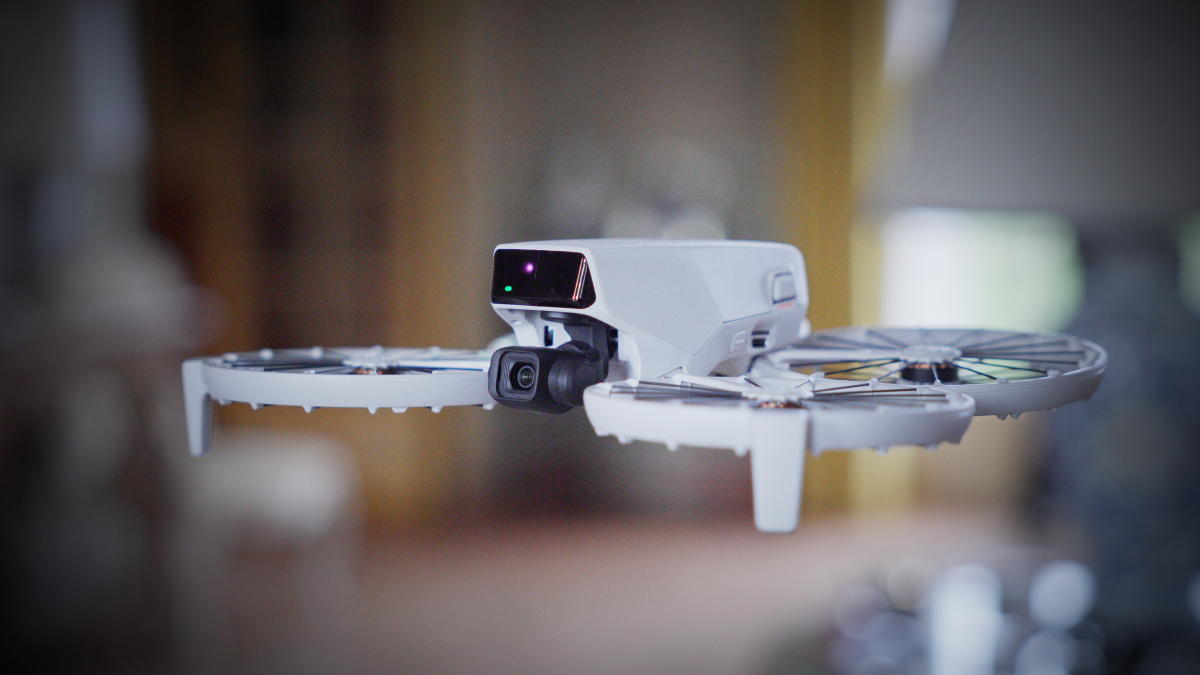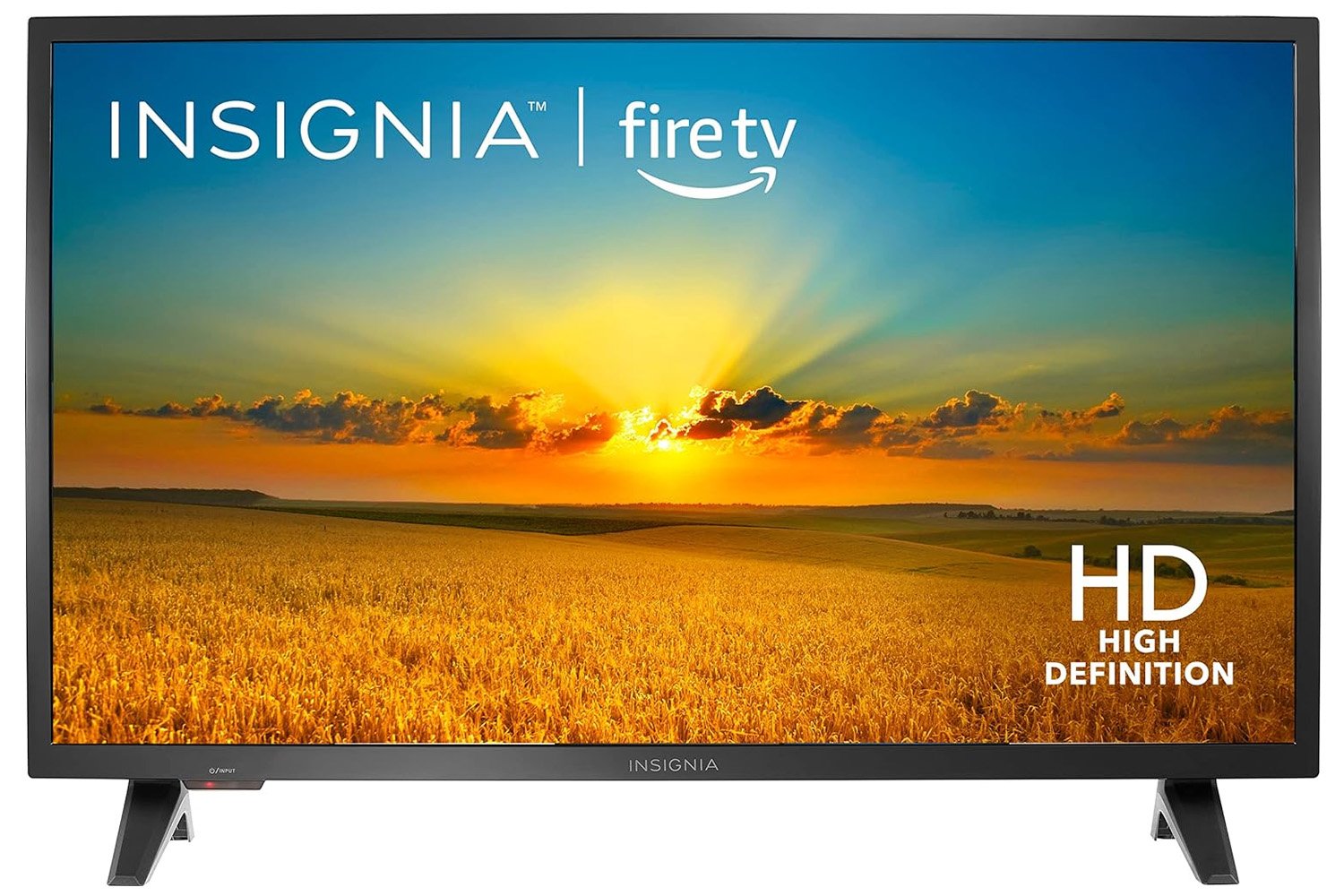Here is the rewritten content without changing its meaning, retaining the original length, and keeping proper headings and titles as required:
Following the success of the $200 Neo, DJI has introduced another innovative drone, the Flip. This drone features a unique folding design and shrouded propellers, ensuring safety for users. Additionally, it includes 3D infrared obstacle detection, enabling the drone to track subjects with ease, and boasts an impressive list of features.
The Flip is equipped with a camera borrowed from the Mini 4 Pro, allowing it to capture high-quality 4K 60p video in various environments with minimal risk. The drone also comes with vlogger-friendly features such as Direction Track and Quickshots, making it ideal for social media content creation. Furthermore, the Flip can be controlled using DJI’s controllers, a smartphone, voice commands, or the push of a button.
DJI’s Flip drone features an innovative fold-down design with shrouded, people-safe propellers and a high-quality camera.
Pros
- Sharp and smooth 4K video
- People-safe design
- Excellent battery life
- No license needed
Cons
- Obstacle detection is very limited
- Bulkier than the competition
- Not great in wind
There is no need for a permit to operate the Flip, and the best part is that it is priced at $439, which includes an RC-N3 controller, making it one of the more affordable drones available. To evaluate its performance for creators, the drone was flown inside a castle, a 500-year-old house, and in nature. Although not perfect, with issues such as stiff winds and obstacles, the Flip has some stiff competition with the HoverAir X1 Pro, but it remains one of the most useful creator drones yet.
Design
The Flip features a clever and user-friendly design, with all four propellers folding down and stacking below the body, resembling a Star Wars spacecraft. DJI designed the Flip in this way to incorporate permanent shrouds that protect the propellers, reducing the risk of damage or injury in the event of a collision. The design also incorporates large propellers, which contribute to better performance and reduced noise. In comparison, the DJI Neo has small, fast-spinning propellers that produce a high-pitched shrieking noise.
DJI was able to keep the takeoff weight of the Flip, including the battery and microSD card, under 250 grams by utilizing carbon fiber and other lightweight materials. This means that the Flip can be flown without the need for special permits. However, it is still relatively bulky, especially when compared to the sleek HoverAir X1 Pro.
The Flip offers significantly better battery life than its competitor, with DJI promising up to 34 minutes of maximum flight time (approximately 27 minutes in real-world conditions), compared to the 16 minutes offered by the X1 Pro. The batteries can also be charged quickly, taking about 35 minutes each with the optional four-battery charger. However, a memory card is required, as the Flip only has 2GB of internal storage.
The Flip is DJI’s first lightweight drone to feature a 3D infrared sensor for forward obstacle avoidance and a downward vision sensor for landing spot detection and stability. However, unlike the Mini 4 Pro and other DJI drones, it lacks side or rear obstacle sensors.
A minor issue with the Flip is that its propellers have limited clearance, which can cause them to snag even in short grass during takeoffs. Like the Neo, the Flip is designed for takeoffs and landings from the user’s hand. To facilitate this, it features a button on the opposite side of the power switch that allows for automatic takeoff and flight mode selection. The drone can also be controlled using the app, voice commands, or manually with a controller, either the DJI RC-N3 controller (which requires a smartphone) or the RC 2 controller with a built-in 5.5-inch display.
Features and performance
The Flip can reach speeds of up to 26 mph in sport mode, which is respectable for a lightweight drone, although it is slower than the Mini 4 Pro, which can reach 37 mph. However, the reduced weight and large surface area of the Flip make it less suitable for high winds. When flying over the roof of a castle, for example, it was hit by a gust that nearly pushed it backwards.
Despite this, the Flip can perform tasks that would be challenging or impossible with a Mini 4 Pro. Its full propeller protection, stability, and relatively low noise make it well-suited for flying inside large rooms filled with fragile objects and people, making it an excellent choice for event professionals and content creators working in public spaces.
The Flip is also suitable for beginners, as it can be launched from the user’s hand at the push of a button and will then fly a pre-programmed mode before landing back where it started. One of these modes, Direction Track, allows the drone to fly backwards and follow the user for vlogging purposes. There is also a follow mode for activities like running and hiking, along with social media-friendly flight modes such as Dronie, Rocket, Circle, Helix, and Boomerang. Note that video recorded in these automatic modes is limited to 4K 30 fps.
The Flip is easy to fly manually, either using a smartphone or the supported controllers. Although not as maneuverable as the Mini 4 Pro, it is more accessible for novices to fly and provides a stable camera platform. However, users should be cautious when flying in areas with untextured floors, as this can disrupt the Flip’s sensors and cause instability. In such situations, switching to sport mode can help by disabling the vision-based flight stability sensors, but obstacle detection will also be disabled.
Oddly, the Flip does not support DJI’s Goggles N3 and Motion 3 controller, unlike the cheaper Neo. This is because DJI views the Flip primarily as a camera drone, rather than an acrobatic device.
For those looking to use the Flip to track themselves or others, there is a significant issue: the drone lacks obstacle detection in any direction except forward or down. When flying the drone backwards, for example, users must ensure there are no obstacles behind it that could cause a collision. Additionally, automatic obstacle avoidance does not function when using the Flip’s smart features like Direction Track or ActiveTrack, although the drone will stop 10 feet before hitting anything it detects. This lack of functionality is peculiar, as obstacle avoidance is a crucial aspect of subject tracking, and DJI has not announced any plans to address this issue through a future update. In contrast, the HoverAir X1 Pro can track subjects forwards, backwards, and even sideways with full obstacle detection enabled.
The Flip has an excellent range of up to eight miles, thanks to DJI’s O4 transmission system, and can transmit a high-quality 1080p 60 fps video signal that can be recorded to the controller as a backup. However, when flying using a smartphone with a Wi-Fi connection, the range is limited to just 165 feet.
Camera
The camera is the primary difference between the Flip and the Neo. The Flip features a larger 1/1.3-inch 48-megapixel sensor and a 24mm-equivalent wide-angle F/1.7 lens, similar to the one found on the Mini 4 Pro. This camera provides sharp, noise-free video in good lighting conditions.
The Flip can capture 4K video at up to 60 fps (100 fps in slow-mo mode), whereas the Neo is limited to 30 fps. Additionally, the Flip supports 10-bit D-LogM video, allowing for improved dynamic range in bright lighting conditions, such as on ski slopes. The drone can also capture 12MP or 48MP RAW (DNG) photos.
Video quality is noticeably sharper on the Flip than on the Neo, and it is a far better drone for night shoots or dimly lit indoor settings due to its lower noise levels. Although the DJI Air 3S and Mavic 4 offer higher quality due to their larger sensors, the difference is not significant in good lighting conditions. Since the Flip has only a single camera, video is noticeably noisier when using the 2x zoom. Note that when shooting in automated modes (Direction Track, Dronie, etc.), there is no manual control over the camera’s exposure, shutter speed, and ISO.
The HoverAir X1 Pro features the same-sized 1/1.3-inch sensor and offers similar video quality (with a log mode as well), although DJI’s colors are slightly more accurate. The HoverAir has slightly inferior 4K 60p video unless the Pro Max version is purchased for an additional $200, which provides 8K 30fps and 4K 120fps.
The Flip’s three-axis gimbal allows for silky-smooth video, even in windy conditions. Users can choose Follow mode to keep the camera level, even when the drone banks, or FPV mode, which allows the camera to tilt for a more exciting first-person perspective. Generally, video remains smooth even with sudden maneuvers, whereas footage from the HoverAir X1 Pro exhibits occasional jolts and janky movements.
The Flip’s camera does not rotate 90 degrees like the one on the Mini 4 Pro, so the maximum resolution for vertical video is 2.7K, which is a step backward from the 4K 60 fps 9:16 vertical video on the Mini 4 Pro.
Wrap-up
The Flip represents a significant shift in direction and design for DJI. Unlike traditional drones with open propellers, it provides creators with the ability to capture high-quality video indoors and around people. This is achieved at a relatively affordable price of $439, which is considerably lower than the $759 Mini 4 Pro. However, the Flip is not without its flaws, including reduced maneuverability, issues in windy conditions, and limited obstacle avoidance when using smart modes like ActiveTrack.
As mentioned, DJI faces significant competition in this category, primarily from the $500 HoverAir X1 Pro. Both drones offer features such as palm takeoff, intelligent flight modes, and subject tracking, with similar video quality. The HoverAir X1 Pro provides rear-side active collision detection, a wider lens, and more internal storage, and it is approximately half the size of the Flip. On the other hand, the Flip offers double the flight time and a longer transmission range.
Ultimately, the choice between these drones depends on individual priorities. Those who value portability, subject tracking, and obstacle avoidance may prefer the HoverAir X1 Pro. However, for users who prioritize battery life, smoother video, and a well-established brand, the Flip is the better option. It is refreshing to see multiple products competing in this creator-centric space, as DJI typically dominates the drone market.
Source Link





